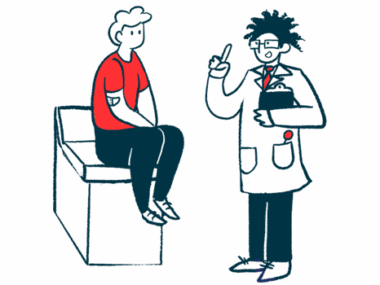Stem Cell-based Gene Therapy Eliminates Symptoms of Pompe in Mice
Results reinforce the strategy as a candidate for clinical development
Written by |

Stem cell-mediated gene therapy normalized glycogen build-up in muscle, heart, and brain tissue of a Pompe disease mouse model, a study shows.
Treatments also restored cellular defects and motor impairment associated with the condition.
The researchers recommended stem cell-based gene therapy as a candidate for future clinical development.
The mouse study, “IGF2-tagging of GAA Promotes Full Correction of Murine Pompe Disease at a Clinically Relevant Dosage of Lentiviral Gene Therapy,” was published in the journal Molecular Therapy – Methods & Clinical Development.
The GAA gene provides instructions for making the acid alpha-glucosidase (GAA) enzyme, responsible for the cellular breakdown of glycogen, a complex sugar molecule. In Pompe, GAA gene mutations result in a loss of GAA enzyme activity, causing the toxic buildup of glycogen, primarily in muscle cells, but also in the nervous system.
Enzyme replacement therapy (ERT) is the standard treatment for Pompe, which provides an active GAA enzyme from an external source. However, ERT requires life-long regular infusions, and its effectiveness is limited by poor update (absorption) into muscle cells and its inability to access the brain.
Gene therapy is another treatment approach being investigated in several clinical trials, which aim to replace the mutated GAA gene with a functioning copy. Limitations of this strategy include immunity against the harmless virus (AAV) used to deliver the healthy gene, limited efficacy in the brain, and decreasing effectiveness over time.
Hematopoietic stem cell (HSPC)-mediated lentiviral gene therapy (LVGT) is a potential alternative treatment option for Pompe.
Here, HSPCs, stem cells that give rise to all blood cells, are collected from a patient’s bone marrow, exposed to a harmless lentivirus carrying the GAA gene, then returned to the patient. So far, HSPC-LVGT has provided long-lasting clinical benefits in several clinical trials in different inherited disorders.
Previously, researchers based at the Erasmus MC University Medical Center, in the Netherlands, tested a version of HSPC-LVGT with an optimized GAA gene in a Pompe mouse model. Treatment led to a partial reduction of glycogen in muscles and the brain, but high doses were needed.
Updated version HSPC-LVGT
of In this report, the team evaluated a next-generation version of their HSPC-LVGT, in which insulin-like growth factor 2 (IGF2) protein was fused to the GAA enzyme to improve cellular uptake via the M6P/IGF2 receptor found on muscle cells.
Of note, Nexviazyme (avalglucosidase alfa) is an approved Pompe ERT whereby the GAA enzyme is fused to the M6P molecule to improve muscle cell uptake. IGF2 also binds to the M6P/IGF2 receptor, but more strongly than M6P, which may enhance cell uptake even further.
Initial cell-based experiments confirmed that adding the IGF2 protein did not affect GAA enzyme activity or its release from cells and enhanced muscle cell uptake via the IGF2 receptor compared to GAA alone or ERT GAA.
Next, HSPCs harvested from the bone marrow of Pompe mice (lacking GAA genes) were exposed to the lentivirus carrying the healthy GAA gene, then returned by into-the-vein infusion.
Six months later, analysis of bone marrow showed transplanted modified cells were well-established, and dose-dependent increases in GAA enzyme activity were observed in all tissues, which correlated with GAA enzyme levels.
As expected, Pompe mice had a pronounced buildup of glycogen in skeletal muscles, which are those attached by tendons to bones. After gene therapy without IGF2, there was a significant dose-dependent glycogen reduction in these muscles. In comparison, when IGF2 was fused with GAA, the gene therapy restored glycogen levels in skeletal muscles to healthy levels.
Autophagy affected
IGF2-based gene therapy also normalized the markers of autophagy — a cellular process that degrades and removes unnecessary or damaged molecules, which is impaired in Pompe. Further, a rotarod test for motor function found both gene therapies, with or without IGF2, resulted in motor improvements that matched healthy mice.
Similar results were seen in heart muscle, with a dose-dependent reduction of glycogen after gene therapy without IGF2, which was enhanced markedly with IGF2, particularly at higher doses. Markers for autophagy were normalized, as was heart size, which was enlarged in Pompe mice.
Pompe mice also showed elevated glycogen in brain tissue, which was reduced by 70% with a low dose of IGF2-based gene therapy, 96% with an intermediate dose, and completely restored to normal levels at the high dose. Treatment also lowered markers of inflammation in the brain and reduced the size of lysosomes, cells’ recycling centers where glycogen accumulates in Pompe.
“These results demonstrate that hematopoietic stem cell mediated lentiviral gene therapy using [IGF2-GAA] is able to achieve full correction of glycogen accumulation and pathology [disease] in murine Pompe disease,” the researchers concluded. They recommended IGF2-GAA “as a candidate transgene for future clinical development of HSPC-LVGT for Pompe disease.”






